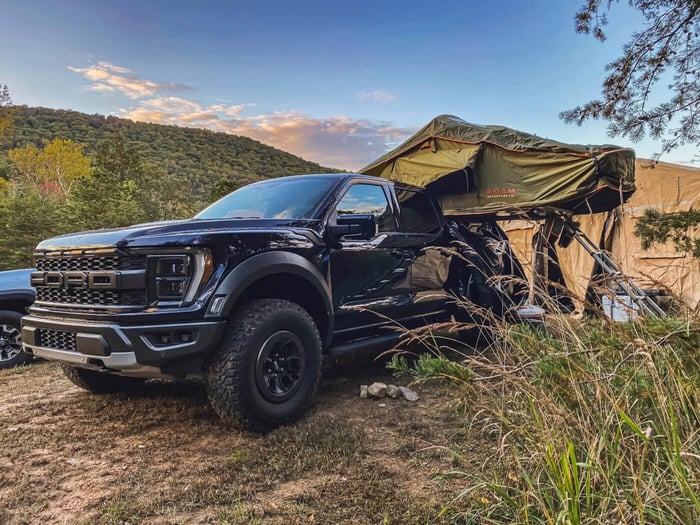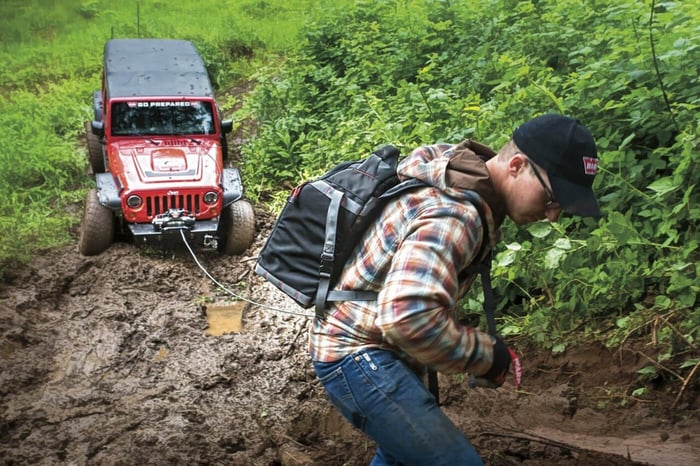
Anatomy of Springs and Shocks
Off-road truck and SUV suspensions have a big job. Your suspension has to hold your vehicle up, allowing room for big tires and preventing the bangs and scrapes that can ruin an undercarriage, while also holding your tires down to the ground, ensuring you have the stability and traction needed for steering and power transfer. Your suspension system has an effect on almost every aspect of your vehicle use, making them one of the most important upgrade areas we recommend modifying.
An Ever-Expanding Selection
Manufacturers already understand how important your suspension system is, which is why there are so many options available when you start looking at aftermarket shocks, springs, and components. Drivers’ suspension preferences are highly individualized, with the feel, cost, and expected vehicle use all factoring into choosing the right components for their off-road truck or SUV. As you browse our suspension parts, you’ll see springs, shocks, coilovers, packages, kits, various stages, and more. Understanding what these mean and how they relate to your ride is vital to making an informed decision.
Learning The Lingo
While we don’t want to get too technical in this introduction, there are a few suspension terms it would be handy to know. This not only will help you understand what we’re looking at when considering shocks and springs, but it also will help ensure you know how to determine where something is missing when talking to a specialist, fellow off-roader, or mechanic about your truck.
- Load - The force being carried by a suspension component.
- Pre-load - When you adjust a component to operate with a set load as its default state. This can adjust the travel of the wheel, fine-tune progression, or even help a vehicle ride slightly higher, such as when using spring perch collars on a Gen 2 Raptor.
- Progression - The rate at which a spring becomes harder to compress as it compresses.
- Spring Rate - The rate at which a spring compresses expressed as pounds needed to compress a spring by one inch. Less force needed for compression creates a softer ride, but may impede handling.
- Travel - The distance the wheel moves as the spring compresses. You want an amount of travel that balances shock absorption with support.
- Smooth or Threaded Body - Shock bodies can be smooth or have threads to allow for the use of adjustment nuts, such as on hydraulic bump stops or dual-rate coilovers.
- Stage X - Companies will offer parts, kits, and systems that are labeled as Stage 1, Stage 2, Stage 3, etc. It’s important to note that while the performance may increase from stage to stage, with more advanced components entering the mix along the way, the formula each manufacturer uses to get to what they consider the next stage can vary, and two companies might have very different packages for a given stage.
Springs Vs. Shocks
Springs are metal components that are engineered to push back against a force at a given rate. For off-roading, as your wheel hits a rock, it rises, compressing a spring that pushes back against it, forcing the tire back down as it presses up against the vehicle, seeking to uncoil from the load the upwards travel placed on it. A spring that allows for more progression might compress farther before enough force is loaded to push back down, giving a “softer ride” while a stiffer spring might allow less travel from the wheel, transferring more of that bump up and into the vehicle. In off-road trucks and SUVs, you will commonly see coil-type springs–thick metal wire coiled into the classic spring shape–and leaf springs–long flat pieces of metal layered on top of each other and curved like a bow to provide mechanical resistance.Shock absorbers, also called dampeners, work on hydraulic principles to create a smoother ride by turning kinetic energy from your wheel going over that big rock in the trail into thermal energy. As the wheel moves, it pushes a piston into the shock’s body where oil is compressed and forced through valves. This compression in a closed system creates heat which is bled off to the air surrounding the shock. The valving, temperature and pressure exerted combine to lessen the amount of energy that reaches the body of the vehicle. In short, while springs are primarily the support between your vehicle and axles, shocks are primarily used to lessen the kinetic energy the vehicle absorbs.
Springing Into Action
Big trucks need big springs to carry big loads, run big tires, and handle the biggest bumps. Coil springs sit on a control assembly, axles, or other chassis components, and allow for more movement of the wheel. This kind of spring can be tuned to adjust the caster and camber of the wheel or the angle at which they attack the ground on contact, but it comes at the cost of stability under heavy loads. The flexibility it offers, however, can come in handy for offroading under extreme conditions that require more play and performance.
Leaf springs, on the other hand, provide plenty of stability because the axle sits suspended from the springs themselves. Leaf springs run parallel to the body of the vehicle, with one end fixed and the other attached to a shackle that pivots as the spring is compressed. If you intend to do a lot of towing or carrying a heavy loadout of cargo regularly, leaf springs give you the support to get the job done. Most trucks use leaf springs under the cargo bed for weight management and coils under the front for better control and handling.
Shocking The System
At their core, all off-road shocks operate similarly. The shock itself has a shaft that is attached to the axle housing by the lower shock eyelet and enters the shock body, which is attached to upper shock mounts with an attached eyelet of its own. Inside, a plunger moves as the shock is compressed, forcing oil through shims that are built to control this flow, inhibiting it in a way engineered to increase the pressure and force the energy to heat the oil without blowing a seam or seal out on the shock itself. As the oil heats up from repeated force and compression, it can begin to froth, losing its ability to properly absorb force.
This is why off-road truck shocks have larger bodies than their light-duty counterparts. More oil means it takes longer for the oil to reach this critical temperature and there is more area to convert pressure into heat, then dissipate it into the surrounding air. In addition, remote reservoir systems allow more oil to be used for this force transfer by connecting an additional volume of oil to your shock via a dedicated line.
What’s The Deal With Coilovers?
Coilovers combine a coil spring and a shock absorber into a single part–literally a coil over a shock. They attach like standard shocks, can come with or without remote reservoirs, and can have one or more levels of springs attached to them to provide a variable spring rate as progression increases. Coilovers use a threaded body to allow for the ride to be finetuned using nuts that can set the preload and how dual-rate coilovers divide the force between springs.
Upgrading Your Suspension
While more and more higher-end trucks and SUVs are offering coilovers straight from the factory, we still see a lot of OEM smooth body shocks and light-duty springs entering the market. Your first step to finding the right parts for your vehicle is entering your make and model information at the top of the page whenever you search for parts. That lets us filter your results to the components that work best on your vehicle. Next, take a look at your big suspension needs.For a better response from your suspension, you need better springs that are up to playing rough. ICON Vehicle Dynamics is one of the top brands in the business, and they offer a wide array of components to fit most vehicles and budgets. They even offer suspension kits that give you an easy way to make sure you’re getting a compatible package of improvements. A smoother ride comes from having plenty of oil to take the brunt of that kinetic force, and Fox smooth body shocks with reservoirs are a great choice, with precision engineering and materials meant to stand up to the toughest off-road tests.
Shocking Customer Service
This article is only meant to be a brief primer about your suspension system, but there’s an expert a phone call away if you need help. One of our pros is available anytime–days, nights, and weekends–to help you find the right part for your build, provide more information, or just talk about how to get your off-road truck from where it’s at to where you want it to be when you hit the field. We’re truck enthusiasts ourselves, and we want to see you push your truck to the limit. Get your aftermarket off-road suspension parts from Offroad Alliance today.



